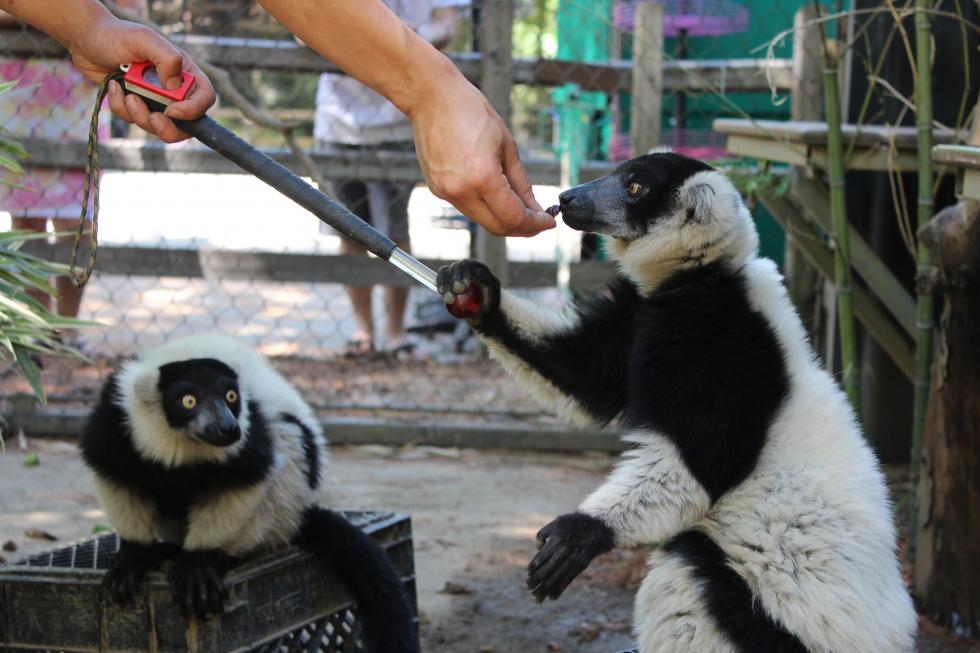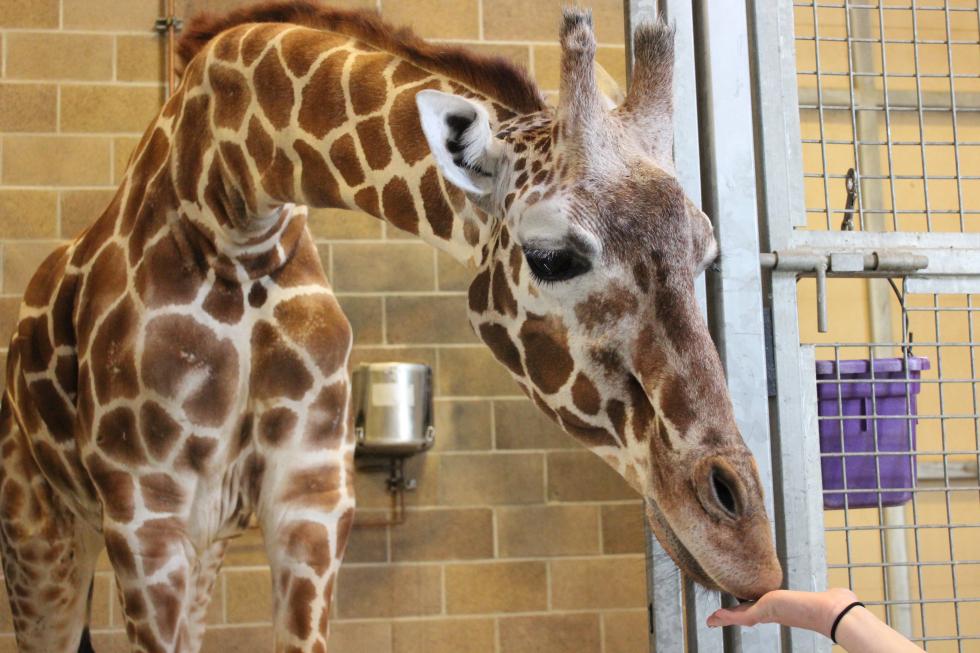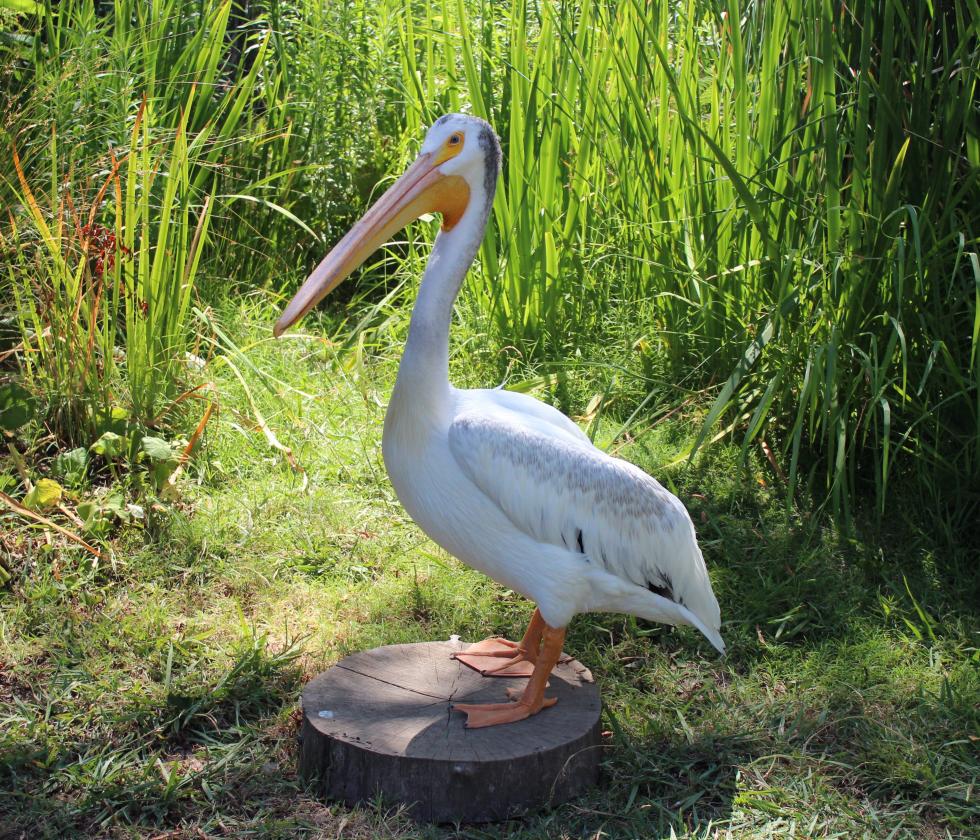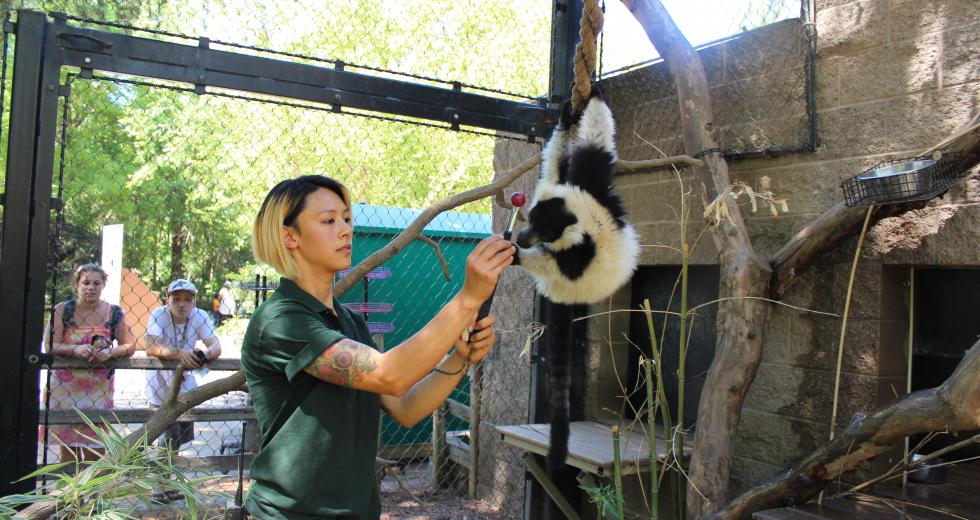On every morning of the year except the two days the Sacramento Zoo is closed on Thanksgiving and Christmas, the zookeepers gather in the kitchen to talk about the day’s work. The brevity of the meeting — today about 10 minutes — disguises the magnitude of the tasks at hand, which are in no particular order: cleaning, feeding, prepping enrichment activities (items and environments to stimulate the animals), performing maintenance, rearranging exhibits, conducting observations and additional housekeeping chores.
Photo Gallery: Behind the Scene at the Sacramento Zoo
Keeper Celina Barbero stays behind after the meeting in the kitchen, where she began her shift at 6:30 a.m. to prepare meals for the more than 500 animals, representing about 140 species, in the zoo’s collection. Barbero is one of four part-time keepers, who are joined by 16 full-time keepers.
“I’m about to start the meat diet — super fun,” says Barbero, a vegetarian. “Everyday, I skin mice and gut them and cut them and you get used to it. It’s one of those things you have to do. The smell is sometimes hard. But the animal needs it.” She periodically references recipes itemizing what and how much each animal should receive, whether vitamins or supplements should be added, and if a diet has been adjusted for an animal recovering from an illness or injury. She knows what meals the animals prefer: “We definitely pay attention to what our animals like and don’t like, and tailor to that.”
Two ruffed lemurs eat dried cranberries as a training reward.

Next year, the Sacramento Zoo celebrates its 90th anniversary. Founded by the City of Sacramento in 1927 on 4.2 acres with 40 animals, the facility now covers 14.5 acres and has been operated by the nonprofit Sacramento Zoological Society since 1997. The zoo is one of more than 230 accredited institutions in the U.S. and overseas in the Association of Zoos and Aquariums, a tight-knit network that forgoes competition and trade secrets in favor of a common goal: ensuring the best possible care for animals. About 500,000 people visit the Sacramento Zoo each year — the region’s most-visited attraction — and today I’m one of them.
Originally, in the late-1800s’ era of tile and concrete cages, U.S. zoos put wild animals on display for the entertainment of humans. But progress in our understanding of animal welfare, science and technology means zoo animals are no longer captive for our pleasure, but for their conservation and for the survival of genetic diversity. Most of today’s zoo animals are born in captivity, as part of breeding programs, and are rarely pulled from the wild. Sometimes they are rescued from being held as pets. Last year, the Sacramento Zoo raised $150,000 for conservation programs.
Nearly every zoo animal now has a “species survival plan,” maintained by a coordinator who has a “studbook” with the species’s genetic history, best care practices, offspring benchmarks, mortality rates and other vital information used to establish breeding recommendations. But these plans do not always go well, as they ultimately involve wild animals who can be unpredictable. This February, zoo staff and an SSP coordinator made the decision to physically introduce a female and male Sumatran tiger; Baha, the female, died from trauma when the male turned aggressive. It was a devastating blow for the zoo.
Regardless of this type of tragedy, species survival plans have become ever-more critical as some scientists say the world has entered the Sixth Extinction, a human-made die-off of species — both plant and animal — at a massive rate not seen since 65 million years ago when dinosaurs went extinct.
To Make Their Lives Happy
Early on a June morning, my guide and I wait outside a locked gate as a keeper moves giraffes so we don’t startle them; ungulates (hoofed mammals) are attached to routines and a surprised giraffe can kill you with one kick. Once allowed in, we find Lindsey Moseanko, the ungulate keeper. She stops to say hello before resuming her raking, as dust billows up, and three Masai giraffes crane their long necks around to see the people below. They have been moved so the keepers can clean. Otherwise, Moseanko explains, “they are curious, not aggressive, and they like to do things like tip your wheelbarrow over [with their heads].”
Shani, who recently gave birth to Rocket, nibbles bark off a tree. Enrichment devices such as buckets filled with grain and produce, and branches with leaves are strung up high where giraffes tend to eat, Moseanko tells me, as she rakes. She has worked here for 27 years. “Everytime I’m around an animal it makes me happy. They each definitely have their own personalities — or animality.” She knows where an animal likes to be scratched or what tone of voice to use. She’s training Rocket how to be comfortable walking by people so everyone is safe when it’s time to shift animals and open and close doors. He will eventually become a breeding male and go to another zoo, as determined by the species survival plan.
Goody is a reticulated giraffe at the Sacramento Zoo.

We visit Goody, born in 1998 with joint abnormalities and who has arthritis. Because giraffes are so tall and their blood pressure very high, veterinarians advised against surgery — the aftercare is also tough. Wild animals need to be cared for in a way they tolerate and accept. Goody has an orthopedic-style shoe designed for her, and receives laser therapy, anti-inflammatory medicine, icing, stretching, acupuncture, pulse electromagnetic therapy and pain medication.
I hustle to keep up with Moseanko as she begins her next task, prepping snacks. “When I was a kid, animals were in concrete little boxes and the animals just sat there,” Moseanko says. “As time evolved, there’s more … naturalistic enclosures, more for animals to do in their time that is good for them and enrichment devices that keep them behaviorally sound.”
The world’s giraffe population has fallen by nearly 50 percent over the past 15 years, according to the San Diego Zoo Global Wildlife Conservancy. “Some people still think in Africa they walk around happy, and we in the zoo are the mean ones who take animals,” Moseanko says, adding that out there, there is human conflict, building developments that cut off food sources and a lucrative poaching and bushmeat trade. It’s not a happy-ever-after life for giraffes in the wild. “I know everyday I work harder for the animals than I do for myself, to make their time here a happy life,” she says.
This theme carries throughout my day: Zookeepers, unsurprisingly, love their jobs and do everything for the sake of the animals. But also for each other — zookeeping is dangerous, with numerous safety measures and mechanisms in place, which I observe as I enter the holding area for the jaguars (after dipping my shoes in a foot bath to prevent cross-contamination). Hanging on the wall are air horns, safety flares and a shovel to defend yourself. There are mirrors to provide peripheral vision, doors and locks. “You can’t have human error,” says Christa Klein, a roving keeper today stationed with the carnivores.
Keepers always respect the jaguars’ boundaries (they do not pet them and are never in the same space) and conduct voluntary training in the form of protected contact through a barrier: jaguars learn, for example, how to present their hips for an injection or raise the pad of their feet for an application of ointment.
We stand about 10 feet from a male jaguar — secured in an enclosure, but close enough to make my shoulders tense — chewing on a bone. In a separate enclosure is the female. “She’s started vocalizing,” Klein says. “He’s vocalizing back at her. It’s actually pretty cute.” Klein grabs a shovel and gets to work, checking the jaguar containment, looking for feces and anything else that may have ended up in here. She rakes together leaf piles — “You can tell they like it when you come back and it’s completely flattened” — and places fish on top of enrichment balls. The jaguars also have logs to scratch. A monthly calendar maps out the enrichment activities.
Before I leave, Klein also brings the discussion around to the plight of jaguars in the wild: The palm oil trade poses a huge problem for the big cats, as humans destroy their habitat to grow this ingredient pervasive in our daily lives.
Zamboni, an American white pelican, was found missing a wing and
wrapped in fishing wire in Montana.

Not Always a Glamorous Job
One of the most important parts of a zookeeper’s job is cleaning. That’s what primate-keeper Sadie Hutchison is doing in the ape house, while the orangutans are on exhibit — although two of them sit against a door peering through a small window at the base, spying on us. “We’re the entertainment as much as we’re the help,” she says.
Hutchison rakes up straw and arranges a swing (made of donated fire hose woven together) and moves around burlap sacks and cardboard boxes. Like the rest of the keepers, she definitely needs a shower at the end of each shift. She likes rearranging the furniture to create a new environment and then watching to see how the orangutans interact with the space — and then doing it better the next time around.
Makan, a male Sumatran orangutan, peers at us. The zoo expects for him to receive a breeding recommendation, from the designated Species Survival Plan coordinator for that particular species of animal, and for a female to come to the zoo. Sometimes, though, the animals here have to go elsewhere. “We’re always very sad to see them go, but we’re happy for the life they have in front of them,” Hutchison says.
In walks Janine Steele, another primate keeper. Steele traveled to Borneo and Kuala Lumpur about four years ago as part of a group to help local keepers and conservation workers build enrichment activities, and learn about diets and modern husbandry. Orangutans have lost substantial habitat and “hundreds and hundreds” of babies have been orphaned. Young orangutans need to spend the first seven years of their life with their mother, a relatively long time for an animal — besides a human — to stay under their mother’s care. Later in the afternoon, she moves to the lemur exhibit, where she trains black and white ruffed lemurs using dried cranberries as a reward.
In her 14 years at the Sacramento Zoo, Steele has gone through her share of joys and heartache including when Josie the chimpanzee died in 2012. Josie joined the zoo in 1986 and became the matriarch of the chimpanzee troop. But by 2012, she was around 48 years old, and suffered deeply from age-related illnesses, prompting the keepers to make the difficult decision to euthanize her. Steele, who had given birth only a few days earlier, was on maternity leave. “I couldn’t be here. I would have slept here if I didn’t have a newborn.”
For Steele, the loss was major. But the keepers can’t wallow in their sadness for too long — they have hundreds of other animals to care for. So it’s back to work. “I spend more holidays with the (animal) families than with my actual family,” she says. “I see them more than I see my own daughter. However, I don’t live here. I only work here eight hours a day. So I try to provide the best experience for them.”



